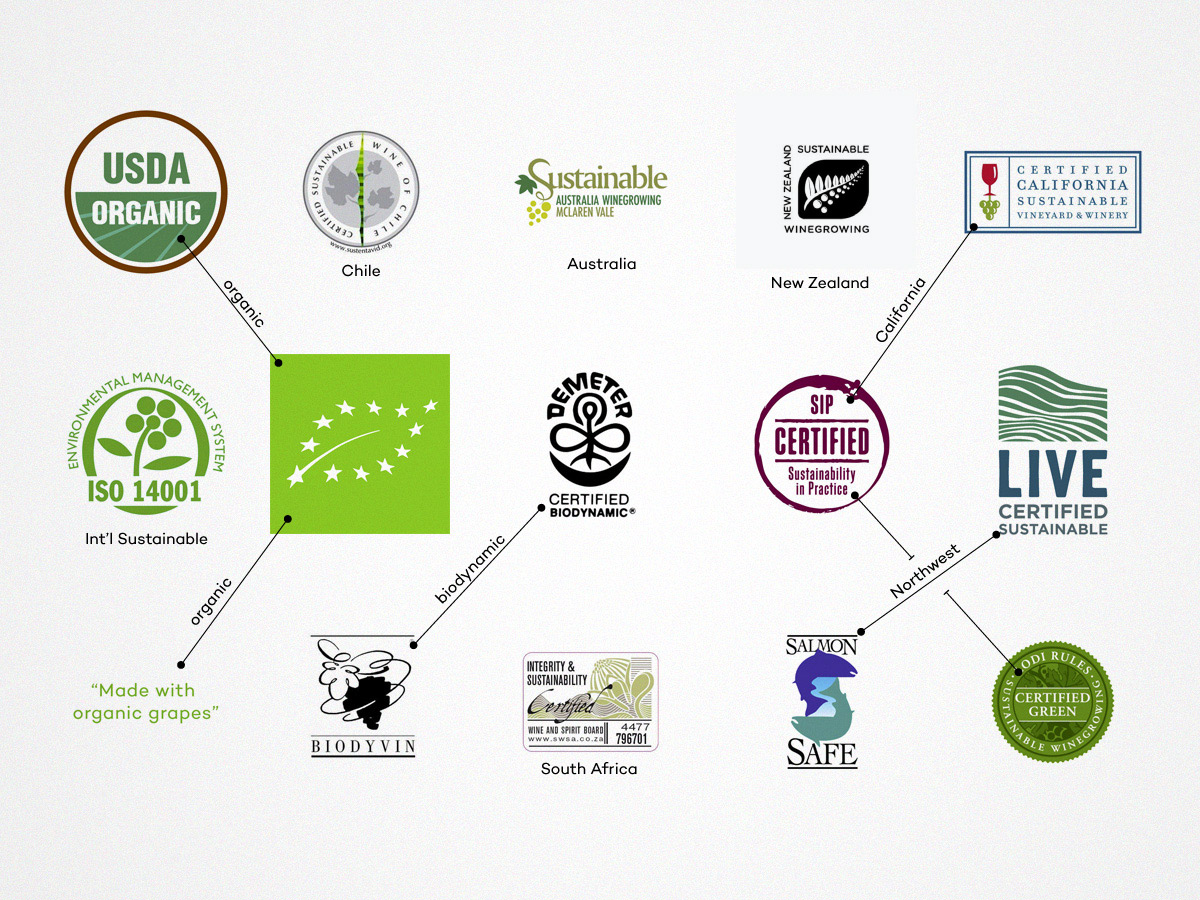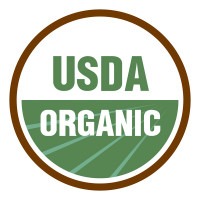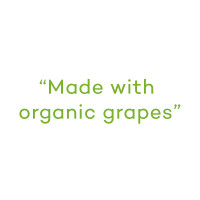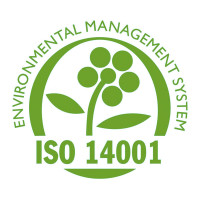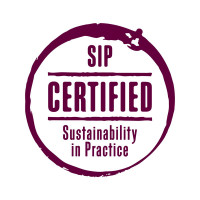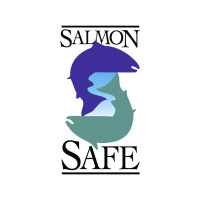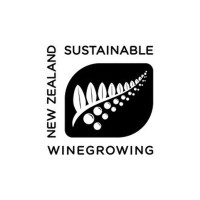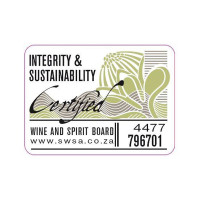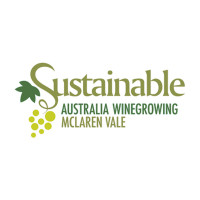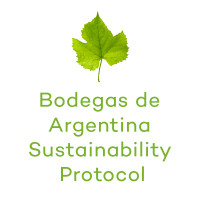No matter how much people make fun of Millennials and Generation Z, they’ve been handed a pretty raw deal for several reasons. For one, both age-groups are entering the world during the worst recession (coined the Great Recession) since World War II and secondly, there is now reliable evidence that the conditions of life-as-we-know-it on Earth will continue to get worse over the next 30 years due to climate change. As these heavy realities hang over the heads of our future generations, they (we) can choose to do one of two things:
- Blue Pill: Put our Beats by Dre on, say “Ffff you!” and ignore the problem until we can’t…
- Red Pill: Realize the only way to create sea change is by voting (in mass) with our time and money…
Those of us who’ve accepted this (the red pill), think a lot differently about how we spend time and money. Where older generations would expend gas to travel miles in order to shop at the discount store Costco and ogle at discounts splashed in yellow highlighter, the new shopper questions the source and cares a lot more about where their money goes (if they spend it at all). Even if we can barely afford it, we’re shopping at local markets, seeking out organic foods, and paying attention to excess waste in our lives. This brings us to the topic of wine…
How does one support sustainability in wine?
There are a myriad (read: hot mess) of certifications in wine. In an attempt to make sense of sustainability in wine, here is a guide to some of the most commonly used wine certifications and what they mean.
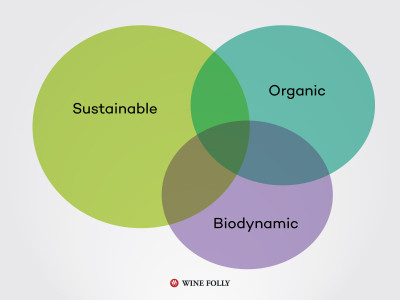
Organic vs biodynamic vs sustainable wine
Each category of certification has differing founding principles (even if there is a lot of overlap). You can think of each category as having a founding principle:
- Organic: Purity of product using non-synthesized ingredients.
- Biodynamic Holistic agricultural health.
- Sustainable Mitigation and reduction of wastefulness in winemaking.
The Basics: Organic
USDA Organic
Wines are made with organically grown grapes, all additives (fining agents, yeast, etc) are organic, no GMO’s (or other prohibited ingredients) are allowed including sulfur additions (sulfites). Despite how good this all sounds, there aren’t that many US organic certified wines due to the fact that sulfur is, at the moment, the best available natural preservative for wine. Because of this, you’ll find that most USDA Organic wines have a much shorter shelf life and aren’t meant to age. So, if you buy USDA Organic wine, store them in your fridge/chiller (both reds and whites) and don’t be surprised if they don’t cellar well.
READ UP: The real deal about sulfites in wine (they’re not as bad as most people think)
“Made with Organic Grapes”
The next step away from USDA Organic is much closer to the European organic certification. Wines made with organic grapes also have organic additives (fining agents, yeast, etc) and are also non-GMO’s. The one caveat to this certification is that wines are permitted to have up to 100 ppm sulfites. Because of this caveat you’ll find “made with organic grapes” to be more popular with forward-thinking quality wine brands. Just so you know, this level of US organic wine is not allowed the USDA Organic seal, so you’ll need to seek out the words “Made with organic grapes” or “Made with organically grown grapes” on the label.
EU Organic
Since the 2012 vintage, the EU has implemented defining regulations for organic wine (prior to 2012, wines were labeled only with “wine made from organic grapes”). The new EU organic certification means wines are made with organically grown grapes, all additives (fining agents, yeast, etc.) are organic, and no GMO’s (or other prohibited ingredients) are allowed. Sulfur additions are limited to 100 ppm in red wines and 150 ppm in white/rosé wines (with a 30mg/l differential where the residual sugar content is more than 2 g/L).
Beyond Organics: Sustainable Wine
Beyond organics is where sustainability comes into play with resource management in terms water and energy efficiency in the vineyard and winery. Sustainability will grow in importance in people’s minds as climate change continues to become a reality. Of course defining sustainability is a bit complicated because of the unique environmental stresses of different wine regions. This is why you’ll see a myriad of different sustainability certification programs. Here are some of the most common sustainability certifications and what they mean (as well as where you’ll see them used).
EMS Environmental Management System (ISO 14001 / ISO 14004)
International
The International Organization for Standardization has a family of standards (the 14000 group) that provides practical tools for companies and organizations looking to manage environmental responsibility. The goal of this program is to identify and reduce environmental waste as well as plan for continual improvement in waste reduction. Because ISO continually updates and revises sustainability guidelines and compliances (which is why ISO changes overtime–14000, 14001, 14004, etc) it’s a good international baseline for sustainability. Several wine regions including Bordeaux (in France), Chile and Australia use the ISO standard.
Certified California Sustainable Vineyard and Winery (CCSW)
California
In 2002, members of the Wine Institute and the California Association of Winegrape Growers (CAWG) introduced a practical self-assessment workbook for both winemakers and wine growers that encompasses three areas of sustainability: Environmental Soundness, Economical Feasibility and Social Equality. The metrics for CCSW include over a hundred criteria which are ranked from 1–4 in water use, energy use, greenhouse gas emissions, and nitrogen use. This means a winery can become CCSW certified with a lower rank (with plans to improve). Today, to become fully certified with CCSW, a third party is required to audit the assessments.
SIP Certified (Sustainability in Practice)
California
SIP certification also adopts the three “E’s” of sustainability–economic viability, environmental stewardship, and social equity with a points system. A winery or vineyard needs 75% of the total possible sustainability points which also include a Prohibited Materials List (various pesticides). Beyond gaining points, vineyards and wineries must also create a sustainability plan which includes documentation, reporting, and examples of how that vineyard/winery is complying to SIP certification. SIP certification is also verified annually through a third party. One strange piece of language in the documentation of SIP is that wines labeled SIP Certified only need to contain 85% SIP Certified wine to be labeled as such.
Certified Green (The Lodi Rules)
Mostly Lodi, California
The Lodi Rules include six areas of focus: 1) business management, 2) human resource management, 3) ecosystem management, 4) soil management, 5) water management, and 6) pest management. As of 2013, the six areas of focus have 101 criteria which are all scientifically measurable. One of the unique features of Certified Green with Lodi Rules is a pesticide assessment system that rates a vineyard’s pesticide use on everything from farm workers’ health to wildlife risk. Wineries and vineyards must also meet one of the three areas of sustainability laid out in CCSW: Environmental Soundness, Economical Feasibility and Social Equality. Finally, certified vineyards have to pass an annual independent audit to verify the certification.
FACT: By 2019, the entire Sonoma wine region will be sustainable.
LIVE Certified (Low Input Viticulture and Enology)
Oregon, Washington and Idaho
Wineries and vineyards must perform a yearly checklist of practices along with reporting to verify sustainability practices have been met for LIVE. The checklist includes a great number of opportunities to improve sustainability including planning and planting vineyards, fertilizing, required crop biodiversity, irrigation standards, and winemaking standards. LIVE is specifically tuned to the climates of the Northwest including the cool-climate areas in Oregon and the dry and sunny-dry climate areas of Eastern Washington and Idaho.
Salmon Safe
Oregon, Washington, British Columbia, California and Idaho
Regions with fragile riparian areas that support salmon populations in Oregon, Washington, British Columbia, California and Idaho have the opportunity to become Salmon Safe. This certification focuses on water management with special attention paid to managing run-off into streams and rivers. With a holistic look at run-off, wineries develop long-term soil conservation techniques which may include creating buffers of natural vegetation inbetween farmlands and streams, and paying close attention to waterways on farm properties.
Sustainable Winegrowing New Zealand (SWNZ)
New Zealand
Wineries and vineyards in New Zealand can expect an audit every 3 years for Sustainable Winegrowing NZ. This program focuses on a wide range of factors including crop biodiversity, soil, water and air standards, energy use, chemical use, vineyard and winery waste, social impact, and sustainable business practices. The program also recognizes other environmental-based certification programmes, including ISO 14001, organic, and biodynamic wine production. Wineries and vineyards must have a plan and metrics for each of the 7 areas listed with a goal to continually improve and perhaps adopt organic/biodynamic certification. Joining any SWNZ programmes is voluntary, but in 2012 about 94% of all NZ vineyards were SWNZ certified.
FACT: Nearly 100% of New Zealand vineyards are certified sustainable.
Certified Sustainable Wine of Chile
Chile
Chile also adopts the three “E’s” of sustainability–economic viability, environmental stewardship, and social equity. Wineries and vineyards are reviewed every 2 years and given scores for their compliance standards where they must meet or exceed the baseline standards given that year. Chile has several certifying bodies that are used to verify whether a winery is compliant including BioAudita, NSF, SGS (which uses the IMO 14001 standard), IMO Chile, and DQS Chile.
Integrity & Sustainability Certified
South Africa
Sustainability in South Africa means vineyards and wineries have health and safety requirements for their workers, reduced usage of chemicals and pesticides, use natural predators to combat pests, and reduction in water usage and creation of waste water systems. Vineyard farms and wineries are audited every 3 years and if they pass the minimum requirements they are allowed to use the Integrity Sustainability seal on their wines. Wines of South Africa intends to support this sustainability measure across 100% of their wines and, in 2011, 85% had passed the minimum compliance.
FACT: Nearly 100% of South African wines are Integrity & Sustainability Certified.
Sustainable Australia Winegrowing (SAW)
Australia
Sustainable Australia Winegrowing is one of 3 certification programs of Australia’s EntWine program (whose goal is to foster environmental custodianship and continuous improvement). SAW is a set of practices that winegrowers use to become sustainable. The program is for vineyards only (not winery facilities) and requires metrics be provided by growers each year.
Bodegas de Argentina Sustainability Protocol
Argentina (no certified labeling yet)
In 2013, Bodegas de Argentina launched a sustainability protocol which was created after a 4-year study at Catena Wine Institute. The protocol was modeled after the Certified California Sustainable Vineyard and Winery (CCSW) system and modified to fit Argentina’s unique climate and growing conditions. For the time being, the protocol exists but there are not certifications to verify compliance.
Biodynamic Wine
There is a small subset of sustainability called biodynamics that focuses on maintaining soil health and timing planting actions with lunar cycles. Biodynamic wines must also practice low-interventionist winemaking to insure wines become a reflection of biodynamic vineyard practices. Some of the practices in biodynamics appear strange, such as using bizarre soil preparations made with herbs and bones (so they’re not exactly vegan). And, while biodynamics aren’t necessarily based in hard sciences, followers challenge that the processes produce remarkably consistent results of improved soil quality and overall vineyard health. To date, there are two programs that certify biodynamic wine internationally: Demeter and Biodyvin.
READ UP: Find out exactly what goes into Biodynamic wines.
Last Word: Look for These on Wine Bottles
Once a winery takes the plunge to making their wines sustainable, the efforts become integrated into how that wine business (and its surrounding community) operates. Sustainability is time-consuming and it does cost money, so you’re likely to see certified sustainable wines cost a buck or two more than the alternatives. The plus side is that you know your money is going directly to businesses making smart agricultural practices all over the world. Yeah, we got this.
